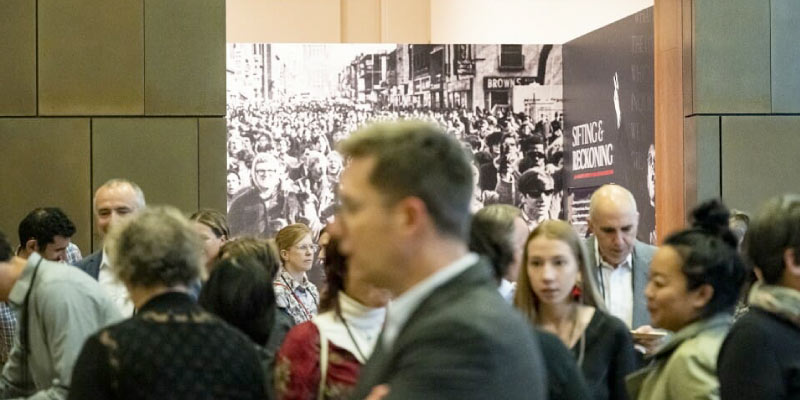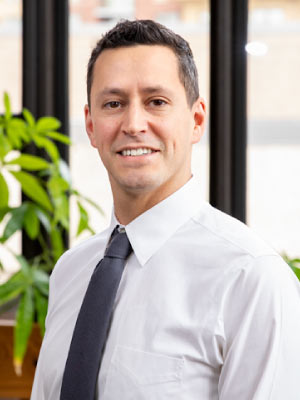
In 2017, the country watched history horrifically repeated itself: Nazi and Ku Klux Klan emblems blazed as a white supremacist rally in Charlottesville, Virginia, turned deadly. Then-UW Chancellor Rebecca Blank swiftly condemned the violent acts and ideologies of these groups, and in response to the incident and its broader context within current events — as well as the then-recent findings of the first campus climate survey — Blank launched an ad-hoc study group to look into the history of UW student organizations that shared the Ku Klux Klan’s name.
Out of that study group came the Public History Project: “multi-year effort to uncover and give voice to those who experienced, challenged, and overcame prejudice on campus.” Over three years, the project — led by Kacie Lucchini Butcher — searched through archives, uncovered stories, and conducted interviews to piece together the untold history of the UW. As the work continued, Lucchini Butcher’s team wrote blog posts and created teaching guides to help the campus community engage with their findings. The work culminated in a special exhibition at the Chazen Museum of Art, titled Sifting & Reckoning: UW–Madison’s History of Exclusion at Resistance, which opened in September and runs through December 23, 2022.

To help determine project scope, make decisions about priorities, and foster connections across campus, Lucchini Butcher put together a steering committee comprising nine campus and community members. One of the committee’s members is Noah Weeth Feinstein, a Nelson faculty affiliate and professor in the School of Education’s Department of Curriculum and Instruction. Feinstein’s own work focuses on how the public engages with science, and a piece of his research surrounds how science museums are trying to improve racial equity. “A lot of places do special initiatives or exhibitions, and oftentimes, those things don’t have an impact,” Feinstein says. “It became clear to me that Kacie was really interested in doing something bigger and using the opportunity presented by this project to catalyze change mechanisms around campus.”
Here, Feinstein shares his thoughts on the exhibit and the process leading to its opening, as well as some suggestions for those interested in (or hesitant to) visiting.
The exhibit opened in September; what was it like seeing it come together?
It’s very satisfying. Seeing it as a coherent whole and recognizing the strength of the choices that the design team made was enormously rewarding — and humbling. They faced a lot of hard choices and were constantly encountering stories that they didn’t have time to tell. I really came to respect the choices that they made, and the way that I feel like those choices do meet a lot of different layers of this complicated university where they are. I think there’s sort of a simplistic reading of this exhibition: that it’s a critique. I think it’s more than that. This exhibition does a really good job of honoring the full range of experiences of people who’ve passed through this place: the hard ones and the triumphant ones. Kacie made a really deliberate decision, along with her staff and the other folks involved, to tell this from the perspective of people who wanted this place to be better — to be a better version of itself — and worked to make it better. That, to me, is such a valuable way of approaching this task.
Is that a unique way to approach an exhibit?
It is a hard balance to strike. A much easier thing to do is to tell a triumphant story. What I really appreciate about the work of this project is that it has been fearless about saying, “We still have problems. There are still things which need to be better.” Not so much saying that ourselves — but bringing up the voices of students and staff and community members who say those things and have noticed those problems so that it isn’t a march of progress. That it honors what’s been accomplished without saying, “Look, it’s all better now!” When institutions tell stories about this, they tend to either be really lacerating or triumphalist. Too many institutional exhibitions about racism and discrimination have been about the past. this is not just a story about the past. Although other folks try to do that, I think this exhibition does a really good job.
Are there any stories or findings that really stuck with you?
For sheer joy of historical discovery, I loved the archival footage of the housing discrimination study. When we think about what historians do, often we miss that side of it: the part which is bringing things to light and dragging them up out of the archives and making them public; the part of history which is sort of like investigative journalism. That was fantastic. I loved learning about that. I was really struck by the material on the gay purges. That was a side of the history that I didn’t know. It’s gripping and tragic and really makes you appreciate things which have changed — “take for granted” is too strong of a phrase, but appreciate as being different. At the same time, you can see that progress is kind of fragile and partial. I am also really struck by all the stories not told. That is one of the things that was very powerful to me: the constant having to say “no” and the sense in which this is a small piece of a much larger puzzle.
What are some of stories the team had to say “no” to?
In telling the story of the faculty, we tell the story of the classroom but not the research. That is a huge piece. There’s been such a huge bourgeoning of awareness in gender discrimination in scientific research, and that’s just one slice. The kinds of research that was done — the way that research here at UW–Madison over the years contributed to eugenic understandings of race. And later, the way that research by Pilar Ossorio, Joan Fujimura, and many others here at UW helped unpack and transform understandings of race. There’s so much to tell, and that sense of the unique pain of being a curator of stories, watching people realize we can’t tell this story. We don’t have the time for it. That really stayed with me also, as much as any individual story. The sense of all the stories not told.
I wonder if some alumni and friends who had great experiences might be hesitant to engage with this work. How would you invite them into the dialogue?
I would invite them as owners of this place who want it to be as good as it can be. I think that our alumni are wonderfully invested in not just celebrating what they like about this university, but in keeping it great and making it better. I think that this exhibition is part of that. It’s not a hit piece! It is a monument to improvement and the desire to improve, which involves acknowledging imperfections. I would also invite them to see that hundreds of thousands of people have passed through this university, and all of their experiences counts. As a campus, we tell a lot of stories about what this place is and what it does. The hard experiences are also part of what we are. Other people whose voices are sometimes less prominent in telling the story of who we are, their experience of this place also count. Their memories of this place also count. I think that if you really love the university, then you’re willing to look at it for what it does well and badly and to join in the effort to make it a version of itself.
Any advice for someone visiting for the first time?
It’s normal for people to start at the beginning and go to the end, and by the time they get to the end, they’re tired. You spend all your energy at the beginning, which is great because the beginning is powerful and the sequence of events in this exhibition is deliberate. Part of me wants to say, go with a group! Split up! Don’t all go through the exhibition the same way in the same order, putting all your energy into that first thing. Have half the group go to the end and go backwards. I think if you have a group — particularly if there’s a chance for people afterwards to say, “What did you see? What did learn?” — having people focus on different things, on the stuff that moves them, is a great way to make that conversation richer.
If there’s one thing people take away from our conversation, what should it be?
This exhibition has a director who is wonderful, and it has faculty and staff involved. But students were very deeply involved in the process of gathering the stories, of putting together the stories, of making it as compelling as it is. That is one of the best parts of it. The students, especially students of color, who were willing to give this project the benefit of the doubt and to use it to constantly challenge the stories that the university was willing to tell about itself, they did some of the bravest and best work. They deserve a lot of praise and thanks for the work that they did.